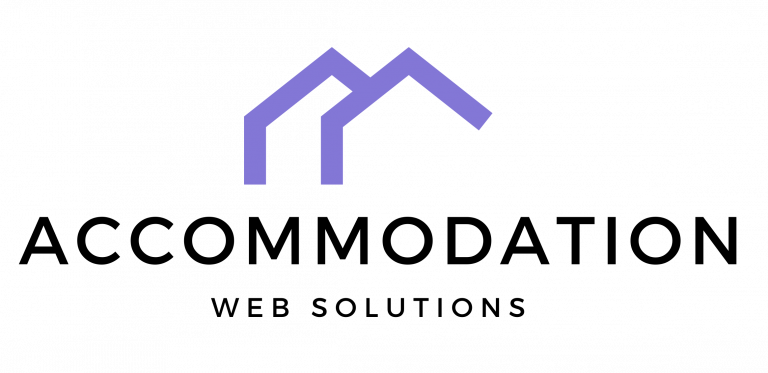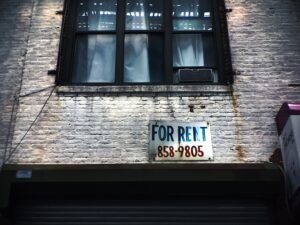BnB website businesses, also known as bed and breakfast or vacation rental businesses, face numerous challenges in today’s competitive market. With the rise of online booking platforms and the increasing number of properties available for rent, it can be difficult for BnB website businesses to stand out and attract customers. Additionally, these businesses often struggle with pricing their properties effectively to maximize revenue and occupancy rates.
One solution that has gained popularity in recent years is demand pricing. Demand pricing is a dynamic pricing strategy that adjusts prices based on supply and demand factors. By implementing demand pricing, BnB website businesses can optimize their pricing strategies to attract more customers during periods of high demand and maximize revenue during periods of low demand.
The Concept of Demand Pricing: What is it and How Does it Work?
Demand pricing, also known as surge pricing or dynamic pricing, is a strategy that involves adjusting prices based on various factors such as demand, availability, and market conditions. The goal of demand pricing is to find the optimal price point that maximizes revenue and occupancy rates.
Demand pricing works by analyzing data on customer behavior, market trends, and historical booking patterns. By gathering this data, businesses can identify periods of high demand and adjust their prices accordingly. For example, during peak travel seasons or holidays, demand for vacation rentals may be high, allowing businesses to increase their prices. On the other hand, during off-peak seasons or weekdays, demand may be low, prompting businesses to lower their prices to attract more customers.
Demand pricing is not limited to the BnB industry; it is widely used in various industries such as airlines, hotels, ride-sharing services, and e-commerce platforms. For example, airlines often adjust their ticket prices based on factors like time of day, day of the week, and proximity to the travel date. Similarly, ride-sharing services like Uber and Lyft use surge pricing to incentivize drivers to be available during periods of high demand.
Understanding Your Target Audience: Key to Implementing Demand Pricing
To effectively implement demand pricing, it is crucial for BnB website businesses to have a deep understanding of their target audience. Knowing who your customers are, what they value, and how they make purchasing decisions can help you tailor your pricing strategies to meet their needs.
There are several ways to gather data on your target audience. One method is through customer surveys or feedback forms. By asking your customers about their preferences, travel habits, and price sensitivity, you can gain valuable insights into their behavior and preferences. Another method is through website analytics and tracking tools. These tools can provide data on customer demographics, browsing behavior, and booking patterns.
Once you have gathered data on your target audience, you can use this information to implement demand pricing strategies. For example, if your data shows that your target audience is price-sensitive and tends to book last-minute, you may want to offer discounted rates during off-peak periods to attract more customers. On the other hand, if your data shows that your target audience is willing to pay a premium for certain amenities or during peak seasons, you can adjust your prices accordingly.
The Benefits of Demand Pricing: Increased Revenue and Occupancy Rates
Implementing demand pricing can have several benefits for BnB website businesses, including increased revenue and occupancy rates. By adjusting prices based on demand, businesses can optimize their pricing strategies to maximize revenue during periods of high demand and attract more customers during periods of low demand.
One of the main benefits of demand pricing is increased revenue. By raising prices during periods of high demand, businesses can capture the maximum value from each booking. For example, if a BnB website business typically charges $100 per night but increases the price to $150 during a peak season, they can generate significantly more revenue from each booking. This additional revenue can be used to invest in marketing, property improvements, or expanding the business.
Demand pricing can also help increase occupancy rates. By lowering prices during periods of low demand, businesses can attract more customers and fill their properties more effectively. For example, if a BnB website business typically has a 50% occupancy rate during weekdays but lowers prices by 20%, they may be able to increase their occupancy rate to 70% or higher. This not only generates more revenue but also helps to cover fixed costs and maximize the utilization of the property.
Case Studies: Real-Life Examples of Successful Demand Pricing Strategies
There are numerous examples of businesses that have successfully implemented demand pricing strategies to increase revenue and occupancy rates. One such example is Airbnb, the leading online marketplace for vacation rentals. Airbnb uses a dynamic pricing algorithm that adjusts prices based on factors such as location, property type, and demand. By implementing demand pricing, Airbnb hosts have been able to increase their revenue by up to 30% and attract more customers during peak seasons.
Another example is Marriott International, one of the largest hotel chains in the world. Marriott uses a demand-based pricing strategy called “Marriott Dynamic Pricing” to adjust room rates based on factors such as demand, competition, and market conditions. By implementing demand pricing, Marriott has been able to optimize its pricing strategies and increase revenue across its portfolio of hotels.
The Role of Technology: Tools to Help BnB Website Businesses Implement Demand Pricing
Implementing demand pricing can be complex and time-consuming, especially for small BnB website businesses with limited resources. Fortunately, there are several technology tools available that can help businesses implement demand pricing more effectively.
One such tool is a revenue management system (RMS). An RMS is a software solution that uses algorithms and data analysis to optimize pricing strategies based on demand and market conditions. These systems can automatically adjust prices in real-time, taking into account factors such as occupancy rates, competitor prices, and historical booking patterns. By using an RMS, BnB website businesses can save time and effort in manually adjusting prices and ensure that their pricing strategies are optimized for maximum revenue.
Another tool that can help businesses implement demand pricing is a channel manager. A channel manager is a software solution that allows businesses to manage their listings across multiple online booking platforms. By using a channel manager, businesses can easily adjust prices and availability across all platforms in real-time. This ensures that prices are consistent and up-to-date, regardless of where customers are searching for properties.
Common Misconceptions about Demand Pricing: Debunking Myths and Setting Expectations
There are several common misconceptions about demand pricing that can hinder businesses from implementing this strategy effectively. One common misconception is that demand pricing is only suitable for large businesses or well-established brands. In reality, demand pricing can be implemented by businesses of all sizes, including small BnB website businesses. With the help of technology tools and data analysis, even small businesses can optimize their pricing strategies and increase revenue.
Another misconception is that demand pricing is only effective during peak seasons or holidays. While it is true that demand pricing can be particularly effective during periods of high demand, it can also be beneficial during off-peak seasons or weekdays. By adjusting prices to attract more customers during low-demand periods, businesses can increase occupancy rates and generate additional revenue.
Challenges of Implementing Demand Pricing: How to Overcome Them
Implementing demand pricing can come with its own set of challenges. One challenge is gathering accurate and reliable data on customer behavior and market conditions. Without accurate data, businesses may struggle to identify periods of high demand or set optimal price points. To overcome this challenge, businesses should invest in data analytics tools and ensure that they have access to reliable data sources.
Another challenge is setting the right price points. It can be difficult to determine the optimal price that maximizes revenue and occupancy rates. Setting prices too high may deter customers, while setting prices too low may result in missed revenue opportunities. To overcome this challenge, businesses should conduct regular price testing and analysis to find the right balance.
Best Practices for Implementing Demand Pricing: Tips from Industry Experts
To implement demand pricing effectively, it is important to follow best practices and learn from industry experts. Here are some tips from industry experts on implementing demand pricing:
1. Start with a solid understanding of your target audience: Before implementing demand pricing, make sure you have a deep understanding of your target audience. This will help you tailor your pricing strategies to meet their needs and preferences.
2. Gather accurate and reliable data: Invest in data analytics tools and ensure that you have access to reliable data sources. This will help you make informed decisions and set optimal price points.
3. Use technology tools: Take advantage of technology tools such as revenue management systems and channel managers to automate and optimize your pricing strategies.
4. Conduct regular price testing and analysis: Continuously test different price points and analyze the impact on revenue and occupancy rates. This will help you find the right balance and make adjustments as needed.
Measuring Success: Metrics to Track and Analyze the Impact of Demand Pricing
To measure the success of demand pricing strategies, businesses should track and analyze key metrics. Here are some metrics that businesses can use to track the impact of demand pricing:
1. Revenue per available room (RevPAR): RevPAR is a key metric used in the hotel industry to measure the average revenue generated per available room. By tracking RevPAR, businesses can assess the effectiveness of their demand pricing strategies in maximizing revenue.
2. Occupancy rate: Occupancy rate is the percentage of available rooms or properties that are occupied during a specific period. By tracking occupancy rates, businesses can evaluate the impact of demand pricing on filling their properties more effectively.
3. Average daily rate (ADR): ADR is the average price per room or property sold during a specific period. By tracking ADR, businesses can assess the impact of demand pricing on their pricing strategies and revenue.
4. Customer satisfaction: Customer satisfaction is an important metric to track as it reflects the overall experience and value provided to customers. By monitoring customer satisfaction, businesses can evaluate the impact of demand pricing on customer perception and loyalty.
By analyzing these metrics and making adjustments as needed, businesses can continuously optimize their demand pricing strategies and maximize their revenue and occupancy rates.
The Future of BnB Website Businesses with Demand Pricing
Demand pricing has emerged as a powerful tool for BnB website businesses to optimize their pricing strategies and increase revenue and occupancy rates. By understanding their target audience, gathering accurate data, and using technology tools, businesses can implement demand pricing effectively and stay competitive in today’s market.
As technology continues to advance and data analytics become more sophisticated, demand pricing is likely to become even more prevalent in the BnB industry. Businesses that embrace this strategy and invest in the necessary tools and resources will be well-positioned to thrive in the future. By continuously monitoring key metrics and making adjustments as needed, BnB website businesses can ensure that their demand pricing strategies are optimized for maximum revenue and occupancy rates.




